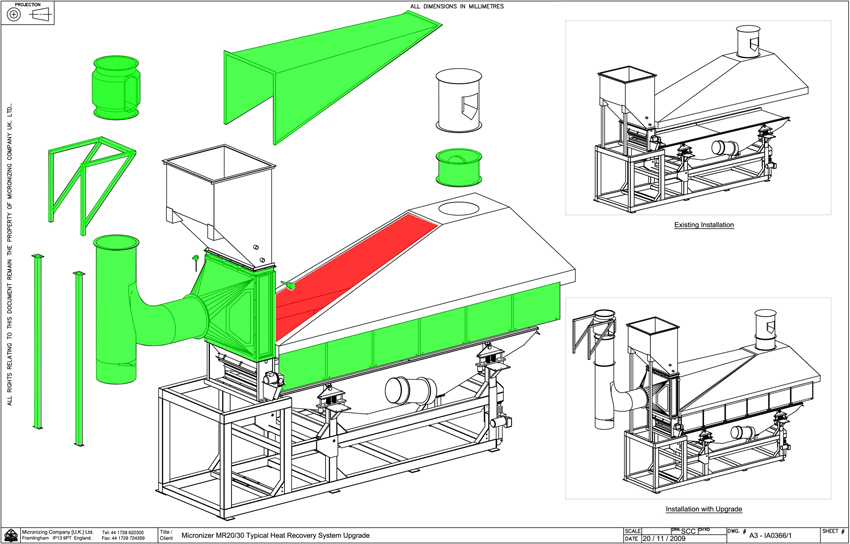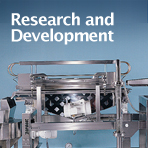Energy Saving and Emissions
 To reduce both environmental and operating costs, all new Micronizers are fitted with a Heat Recovery System (HRS), applicable to every sort of food product from cereal to cocoa processing. In addition, all existing Micronizers can be retro-fitted with HRS.
To reduce both environmental and operating costs, all new Micronizers are fitted with a Heat Recovery System (HRS), applicable to every sort of food product from cereal to cocoa processing. In addition, all existing Micronizers can be retro-fitted with HRS.
Consistent results and successful performance worldwide with the HRS have confirmed a highly significant improvement in energy efficiency, without compromising quality. A drawing principle of the Heat Recovery System can be viewed here.
Benefits
The benefits of fitting a HRS to the Micronizer may be viewed in two ways:
Option 1. as a circa 30% reduction in energy consumption, achieved by removing burners and re-tuning the air/gas mixer, while maintaining existing production output.
Option 2. as a minimum 30% increase in production output, achieved by maintaining the original number of burners and the existing energy consumption.
Measuring HRS parameters during ‘steady state’ running conditions, constant data records an exit air temperature at maximum 40 deg C at the HRS exhaust and a product temperature of ambient + circa 40 deg C at the feeder, prior to the infra red burners.
Investment, fuel costs and energy saving data, tests reports on emissions, odours, exhaust fumes and dust are available on request.
Please see our contact page to request information on reports
Description
The HRS is designed to preheat the product fed to the Micronizer, using waste heat from the Micronizer infra red manifold to enable higher capacities and/or greater fuel efficiencies.
The hot air ducted under the canopy is passed through the heat recovery system (HRS) which ensures a very uniform heat transfer to the product as it feeds onto the Micronizer before infra red cooking. The HRS is positioned immediately above the feed roll or vibratory feeder. The temperature rise in the product is controlled, typically to around 40°C, by operation of the HRS exhaust fan and control valve. A by-pass valve and canopy exhaust fan, fitted to the top of the canopy, operate at start up and close down to allow the hot air to by-pass the HRS.
A feed hopper, located above the HRS, ensures that the HRS remains full during operation. Level probes, positioned in the feed hopper, control the product flow.









